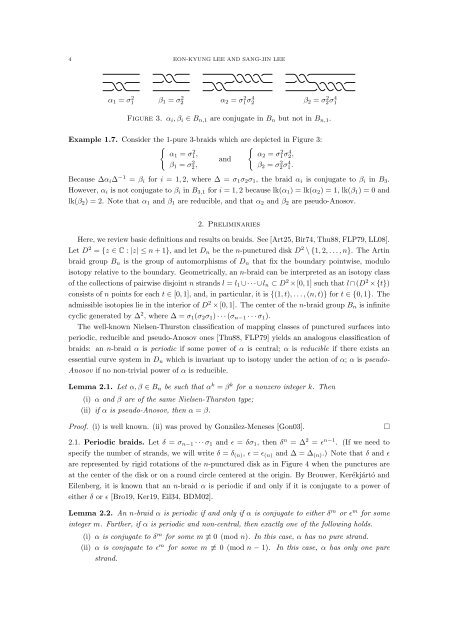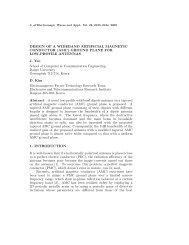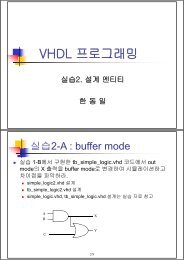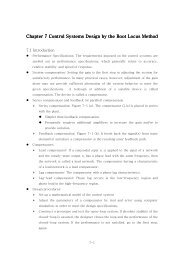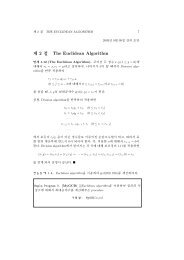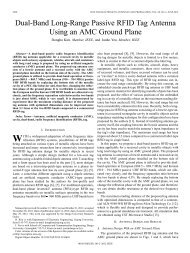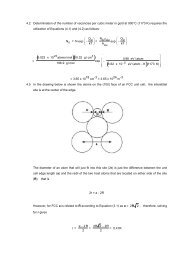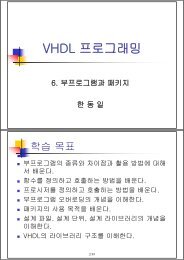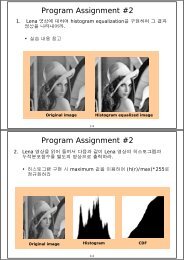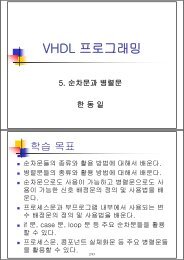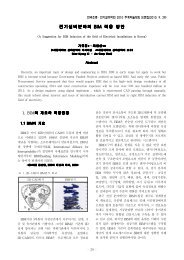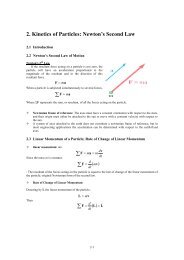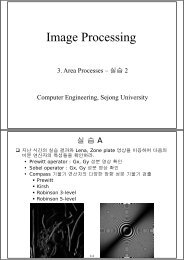UNIQUENESS OF ROOTS UP TO CONJUGACY FOR SOME ...
UNIQUENESS OF ROOTS UP TO CONJUGACY FOR SOME ...
UNIQUENESS OF ROOTS UP TO CONJUGACY FOR SOME ...
Create successful ePaper yourself
Turn your PDF publications into a flip-book with our unique Google optimized e-Paper software.
4 EON-KYUNG LEE AND SANG-JIN LEE<br />
α 1 = σ 2 1 β 1 = σ 2 2 α 2 = σ 2 1σ 4 2 β 2 = σ 2 2σ 4 1<br />
Figure 3. α i , β i ∈ B n,1 are conjugate in B n but not in B n,1 .<br />
Example 1.7. Consider the 1-pure 3-braids which are depicted in Figure 3:<br />
{<br />
{<br />
α 1 = σ1,<br />
2 α 2 = σ 2<br />
β 1 = σ2,<br />
2 and<br />
1σ2,<br />
4<br />
β 2 = σ2σ 2 1.<br />
4<br />
Because ∆α i ∆ −1 = β i for i = 1, 2, where ∆ = σ 1 σ 2 σ 1 , the braid α i is conjugate to β i in B 3 .<br />
However, α i is not conjugate to β i in B 3,1 for i = 1, 2 because lk(α 1 ) = lk(α 2 ) = 1, lk(β 1 ) = 0 and<br />
lk(β 2 ) = 2. Note that α 1 and β 1 are reducible, and that α 2 and β 2 are pseudo-Anosov.<br />
2. Preliminaries<br />
Here, we review basic definitions and results on braids. See [Art25, Bir74, Thu88, FLP79, LL08].<br />
Let D 2 = {z ∈ C : |z| ≤ n + 1}, and let D n be the n-punctured disk D 2 \ {1, 2, . . . , n}. The Artin<br />
braid group B n is the group of automorphisms of D n that fix the boundary pointwise, modulo<br />
isotopy relative to the boundary. Geometrically, an n-braid can be interpreted as an isotopy class<br />
of the collections of pairwise disjoint n strands l = l 1 ∪· · ·∪l n ⊂ D 2 ×[0, 1] such that l ∩(D 2 ×{t})<br />
consists of n points for each t ∈ [0, 1], and, in particular, it is {(1, t), . . . , (n, t)} for t ∈ {0, 1}. The<br />
admissible isotopies lie in the interior of D 2 × [0, 1]. The center of the n-braid group B n is infinite<br />
cyclic generated by ∆ 2 , where ∆ = σ 1 (σ 2 σ 1 ) · · · (σ n−1 · · · σ 1 ).<br />
The well-known Nielsen-Thurston classification of mapping classes of punctured surfaces into<br />
periodic, reducible and pseudo-Anosov ones [Thu88, FLP79] yields an analogous classification of<br />
braids: an n-braid α is periodic if some power of α is central; α is reducible if there exists an<br />
essential curve system in D n which is invariant up to isotopy under the action of α; α is pseudo-<br />
Anosov if no non-trivial power of α is reducible.<br />
Lemma 2.1. Let α, β ∈ B n be such that α k = β k for a nonzero integer k. Then<br />
(i) α and β are of the same Nielsen-Thurston type;<br />
(ii) if α is pseudo-Anosov, then α = β.<br />
Proof. (i) is well known. (ii) was proved by González-Meneses [Gon03].<br />
□<br />
2.1. Periodic braids. Let δ = σ n−1 · · · σ 1 and ɛ = δσ 1 , then δ n = ∆ 2 = ɛ n−1 . (If we need to<br />
specify the number of strands, we will write δ = δ (n) , ɛ = ɛ (n) and ∆ = ∆ (n) .) Note that δ and ɛ<br />
are represented by rigid rotations of the n-punctured disk as in Figure 4 when the punctures are<br />
at the center of the disk or on a round circle centered at the origin. By Brouwer, Kerékjártó and<br />
Eilenberg, it is known that an n-braid α is periodic if and only if it is conjugate to a power of<br />
either δ or ɛ [Bro19, Ker19, Eil34, BDM02].<br />
Lemma 2.2. An n-braid α is periodic if and only if α is conjugate to either δ m or ɛ m for some<br />
integer m. Further, if α is periodic and non-central, then exactly one of the following holds.<br />
(i) α is conjugate to δ m for some m ≢ 0 (mod n). In this case, α has no pure strand.<br />
(ii) α is conjugate to ɛ m for some m ≢ 0 (mod n − 1). In this case, α has only one pure<br />
strand.


